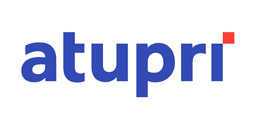Administrative expenses represent a significant cost for Swiss health insurance providers. According to the most recent data provided by the Federal Office of Public Health, the combined administrative costs of Swiss compulsory health insurance totaled approximately 1.4 billion francs in 2016. For the sake of comparison, total premiums collected in the same year amounted to 28.686 billion francs. Employee salaries account for around 73% of compulsory health insurance administrative costs.
But commissions paid out for the sale of compulsory and supplemental health insurance add a significant and politically sensitive health insurance cost. moneyland.ch analyzed the latest data from the Federal Office of Public Health and Swiss financial regulatory authority FINMA to determine the impact of sales commissions on the administrative costs of health insurance. The results show that supplemental insurance sales commissions pose an astonishingly large expense to health insurance providers.
Sales commissions account for more than a quarter of costs
In 2016, sales commissions on compulsory health insurance sales paid out by health insurance providers to both internal and external salespeople totaled around 33 million francs. That is “only” around 2.4% of total administrative costs. But around 56 million francs in sales commissions were paid out in 2016 for sales of supplementary health insurance policies monitored by the FOPH (including sales commissions to employees). Combined sales commissions for FOPH-monitored supplementary health insurance made up 25.6% of respective administrative costs.
However, most of the major supplementary health insurance providers are not monitored by the FOPH, but by FINMA. According to FINMA, health insurers spent 428 million francs on sales commissions to insurance brokers and agents. That is around 29% of the total supplementary health insurance administrative costs of 1.46 billion francs.
According to FINMA data, health insurance provider Helsana pays out the most sales commissions – around 106 million francs (for combined Helsana policies excluding compulsory health insurance). Some insurers spent as much as half of their total administrative budgets for supplementary insurance on sales commissions. Sales commissions at insurance provider Assura, for example, amounted to 22.8 million francs out of Assura’s 47.8 million franc administrative budget for supplementary health insurance in 2016.
Criticism of sales commissions
The total cost of sales commissions to health insurance providers in 2016 came to more than half a billion francs. Of that amount, only 33 million was paid for compulsory health insurance sales. However, the lines between compulsory and supplementary health insurance are often not strictly defined.
Health insurance providers often pay very high commissions for sales of supplementary health insurance policies. These can come to 1000 francs or more. The problem is that some brokers and agents push unnecessary supplementary health insurance on consumers in order to claim the high sales commissions. Insurers sometimes offer salespeople bonuses in addition to sales commissions when certain sales quotas are achieved. These bonuses can lead to conflicts of interests between salespeople and the consumers they serve.
Marketing costs of compulsory health insurance
According to the most recently released FOPH data, health insurers spent 47 million francs on advertisement of compulsory health insurance in 2016. That amounts to around 3.5% of total administrative costs. Sales commission spending was higher than that in 2014 and 2015, at around 56 million francs per year. Insurers monitored by the FOPH spent around 9.8 million francs on advertising supplementary health insurance products in 2016 – but the FOPH only monitors 13 supplementary insurance providers. Supplementary insurance providers which are monitored by FINMA (rather than the FOPH) account for the bulk of marketing investment.
Differentiating between marketing of compulsory health insurance and marketing of supplementary health insurance is difficult. Many marketing campaigns do not relate exclusively to either compulsory or supplementary insurance, but simply market the insurance provider or general services. Unless a marketing campaign promotes a compulsory health insurance policy exclusively, the costs of the campaign may be categorized as supplementary insurance marketing costs. Expenses related to supplementary health insurance premiums are less politically sensitive than those related to compulsory health insurance premiums which all residents are legally obligated to pay. This can provide insurers with an incentive to list marketing expenses under supplementary health insurance whenever possible.
Administrative costs per policyholder: 163 francs
The administrative costs of compulsory health insurance account for all running costs related to providing health insurance services, including salaries, sales commissions and advertising. In 2016, health insurance providers spent an average of 163 francs per policyholder on administration. In 2015, administrative costs averaged 169 francs per policyholder. Costs came to 166 francs per policyholder in 2014, 159 francs per policyholder in 2013 and 153 francs per policyholder in 2012 (download the full comparison as a PDF below).
Insurance providers which had the lowest administrative costs per policyholder in 2016 include the Krankenkasse Luzerner Hinterland (87 francs), Sanagate (90 francs), sana24 (94 francs) and Sumiswalder Krankenkasse (96 francs). Ingenbohl had the highest administrative cost per policyholder at 383 francs.
Efficiency in relation to premiums
The relation between administrative costs (plus depreciation) and premiums (minus risk balancing) of compulsory health insurance is another important benchmark. In 2016, Visana had the lowest ratio, with administrative costs equal to just 2.91% of premiums. Vivacare (3.21%), Krankenkasse Luzerner Hinterland (3.31%) and CSS (3.39%) also perform well in this regard. Across all health insurers, administrative costs amounted to 5.21% of premiums in 2016, based on a weighted average. Averages in previous years were 5.46% (2015), 5.69% (2014), 5.62% (2013) and 5.68% (2012).
More on this topic:
Health insurance premiums comparison
Hospital insurance
Supplemental health insurance

 Deal of the Day
Deal of the Day 







